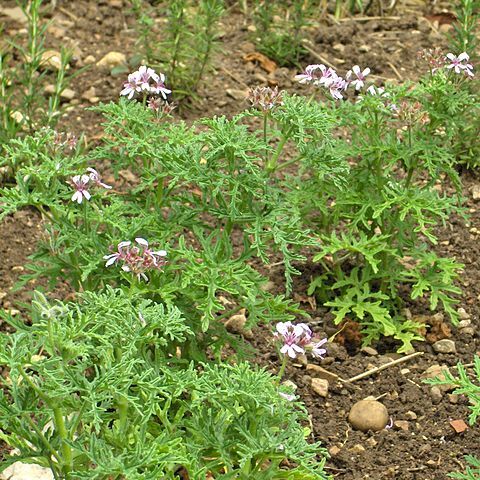Erect, densely-branched shrub, < 1 m high; stems basally woody, side branchlets scabrous with stiff bristles. Leaves petiolate, scabrid, triangular, up to 50 x 65 mm, palmately bipinnatifid in outline, segments obtusely lobulate; pungent odor when bruised. Inflorescences of 2-6-flowered pseudo-umbels; peduncles short. Petals 5, pale to pink-purple, posterior 2 with beetroot-purple streaks, entire, tip slightly notched. Flowering time Aug.-Dec.
Aromatic shrub to 1.5 m. Leaves bipinnatisect with ribbon-shaped segments ± 3 mm wide, rose-scented, 6 cm diam. Flowers to 8 on short, axillary peduncles, ± 20 mm diam., purple; hypanthium 2-8 mm long, ± as long as pedicel.
A shrub. It grows 1.5 m tall. The leaves are very divided. They are 3-5 cm long by 3-6 cm wide. The flowers are pale purple or pink with purple markings.

